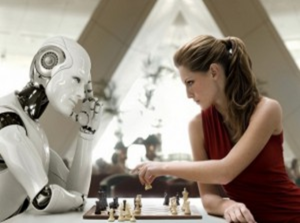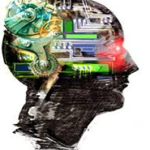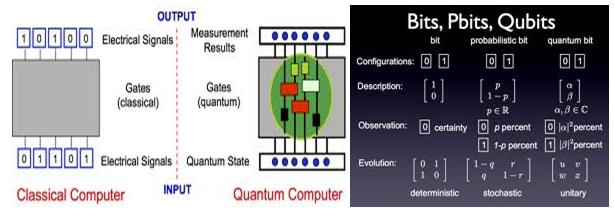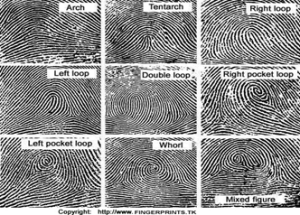
Title: A Study paper on Pattern Recognition
Authors:
J.Rudra Nageswari, 4th Year BTech, CSE Department
R.Raju, 4th Year BTech, IT Department
Abstract:
To avoid the challenges of pattern recognition store the memory with optical fiber storage capacity. And use the neural networks concept to store the brain vibrations for the different patterns or labels. And it also describes how the quantum computer is better than normal computer for pattern recognition. This paper seeks to provide basic information about the pattern recognition and small ideas to overcome to challenges. The methods are briefly described.
Definition:
Pattern recognition is the assignment of a label to a given input value. An example of pattern recognition is classification, which attempts to assign each input value to a particular class.
- Thus, a pattern could be a fingerprint image, a handwritten cursive word, a human face, a speech signal, a bar code, or a web page on the internet.
- For example commonality in all fingerprint images defines the fingerprint pattern; the commonality in fingerprint images of John Doe’s left index finger defines the John -Doe-left-Index finger print
- Generally a pattern is defined by the common feature among the multiple instances of an entity. Often, individual patterns may be grouped into a category depend upon their common properties; the resultant group is also a pattern and often, we call it as a patterns class.
- Pattern recognition is the science of observing the environment and classifying the input values.
- The objects can be classified by following some techniques & algorithms.
- Humans are the best pattern recognizers in most scenarios, at are don’t fully understand how we recognize patterns.
- Ross (1998) emphasizes the work of Nobel Laureate Herbert Simon whose central finding is that pattern recognition is critical in most human decision making task.
- This is made easy through Artificial Intelligence since computer can surely be taught to recognize patterns. For example Banks score credit applications, help doctors diagnose diseases and help pilots land airplanes depend in some way on pattern recognition.
Approaches for pattern recognition:
- Statistical classification
- Template matching
- Geometrical classification
- Artificial neural networks
- Syntactic or structural matching
Challenges:
- Selection of training sets
- Representation of objects
- Inter and intra class distances
- Invariance of representation
- The problem of overtraining
Suggested methodology:
Pattern recognition is easy through artificial intelligence. A machines vision is far better than humans vision. A machine can hear better than a human. If a robot walks into a room it can analyze each and every object in the room so better than a human can do. But the main disadvantage is it can’t understand what it sees, it can’t understand what it hears, it can’t understand what it looks. Computer can master the syntax of a language but not the semantic of the language. This way it can’t react with its own mind. It functions through its syntax only.
Human brain process 500trillion bytes per second by following its environment. But the computer can’t process its environment. This is also another disadvantage. We can’t program common sense into our program. According to the syntax computer develop the program unless we are having the semantic of the program it will not be an accurate program. By inserting the common sense programs into our system we can achieve this problem.
The best example is a chess game towards a computer. Once human moved his coin the computer acts according to the opposite person’s move. By this it reacts to its environment.
Chess game between a human and computer:

By the above example artificial intelligence proved better than human. In the pattern recognition also a robot can classify things better than a human can do. For that sensing of objects and sensing its surroundings is also a most important note. By developing common sensing programs we can achieve this problem.
Developing of common sensing programs:
By studying the brain of humans we can earn some clues. The neural schema architecture provides help to identify the complex behavior of the different inputs.

Fig: Brain neural schema analysis.
Schema Theory helps to recognize the brain functionalities. Neural schema theory is used to differentiate the unclassified labels by using top-down and bottom-up circuitry approaches of neural schemas. By the experience human’s can react to their opposite things through their neural schema. The brain finger printing is also helpful in pattern recognition.
By taking one human brain, research on that how it can react for different situations and what are the impacts of those situations on brain. By studying those, we can prepare one another neural schema. That has to be installed in robots that are used for pattern recognition. By that we can effectively work on pattern recognition.
Quantum computing:
By the quantum computing we can achieve some complex problems. Instead of using the normal computer if we use the quantum computer it works better than the general one for pattern recognition. Security must also be high while using the quantum computer. By using the quantum computation installing of common sensing programs is possible to a robot.

Fig: quantum computer woking process
By the help of quantum mechanics we can model associative memory with optical storage process. Thermodynamics provides criteria to tune the efficiency of quantum pattern recognition. The general memory undergoes a phase transition from a disordered, high-temperature phase with no correlation between input and output to an ordered, low temperature phase with minimal input-output hamming distance.
The reactions of humans as per different situations the memory is stored through some storage devices. And then it is processed and apply to the human made robots. Give the neural schema to the robot to react as per the situation. By this it can acquire analyzing capacity of complex labels easily. This way the problems of pattern recognition like selection of training sets and representation of objects is solved.
Results:
- Useful in identifying the criminals in investigation process
- Easy to identify the pattern
- Classification of new species
- Person identification
Conclusion:
This way by the above methodology we can easily recognize patterns and we can group them accurately. It will be very useful in many types of applications like investigation department, optical character recognition, automatic speech recognition, personal identification.
References:
1)Bishop C.M. (1995), Neural Networks for Pattern Recognition. Clarendon Press.
2) Duda, R.O., Hart, P.E. and Stork, D.G. (2001), Pattern Classification and Scene Analysis, 2nd ed. Wiley.
3) Fu, K.S. (1983). ‘A step towards unification of syntactic and statistical pattern recognition’. IEEE Trans. On Pattern Analysis and Machine Intelligence, vol. 5, no. 2.
4) Jain, A.K., Duin, R.P.W. and Mao, J. (2000), ‘Statistical Pattern Recognition: A Review’. IEEE Trans. on Pattern Analysis and Machine Intelligence, vol. 22, no. 1.
5) Perlovsky, L.I. (1998), ‘Conundrum of combinatorial complexity’. IEEE Trans. on Pattern Analysis and Machine Intelligence, vol. 20, no. 6.
6) Picard, R. (1997). Affective Computing. MIT Press.
7) Ripley, B. (1996), Pattern Recognition and Neural Networks. Cambridge University Press.
8) Ross, P.E. (1998). ‘Flash of Genius´. Forbes.
9) Watanabe, S. (1985). Pattern Recognition: Human and Mechanical. Wiley.

